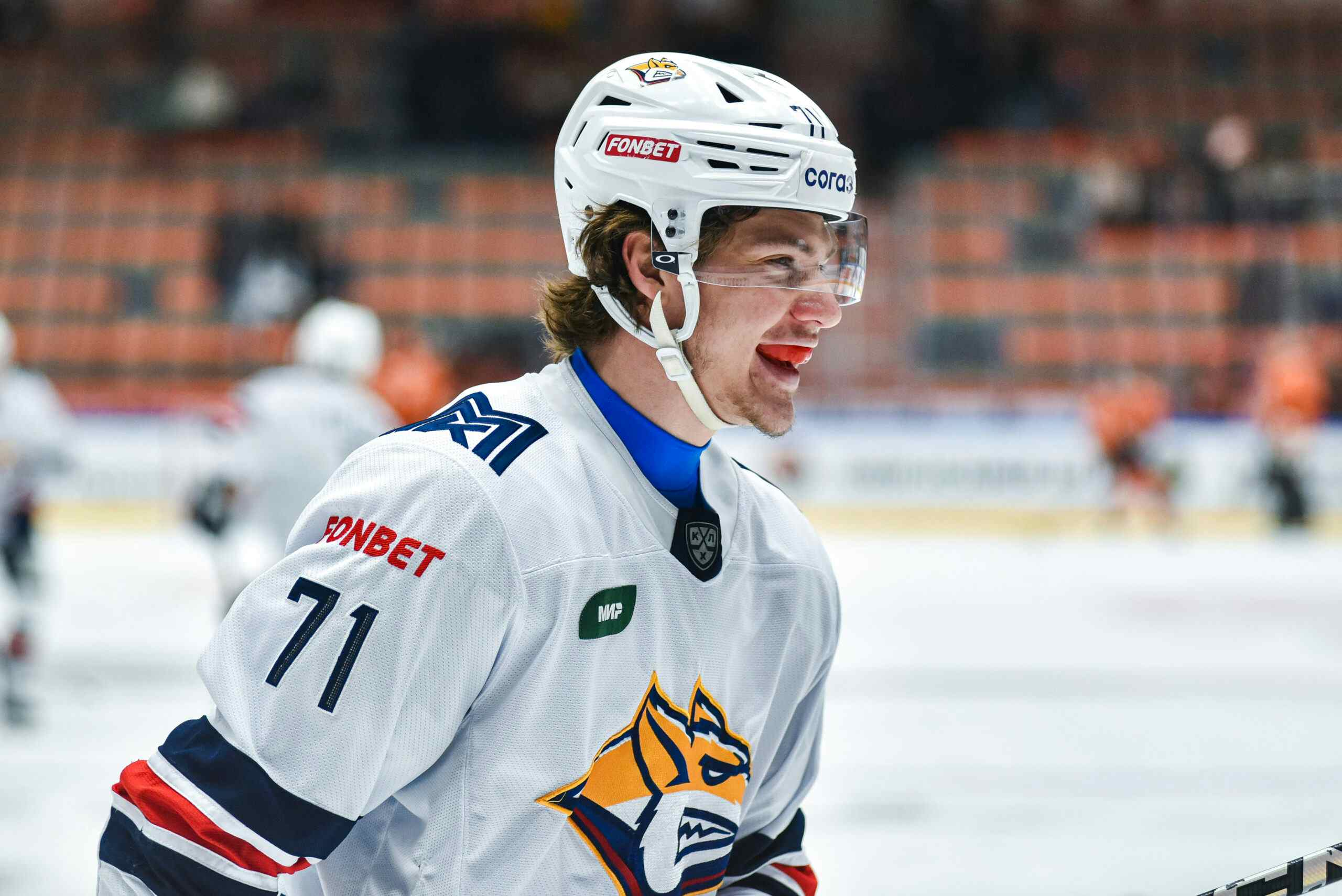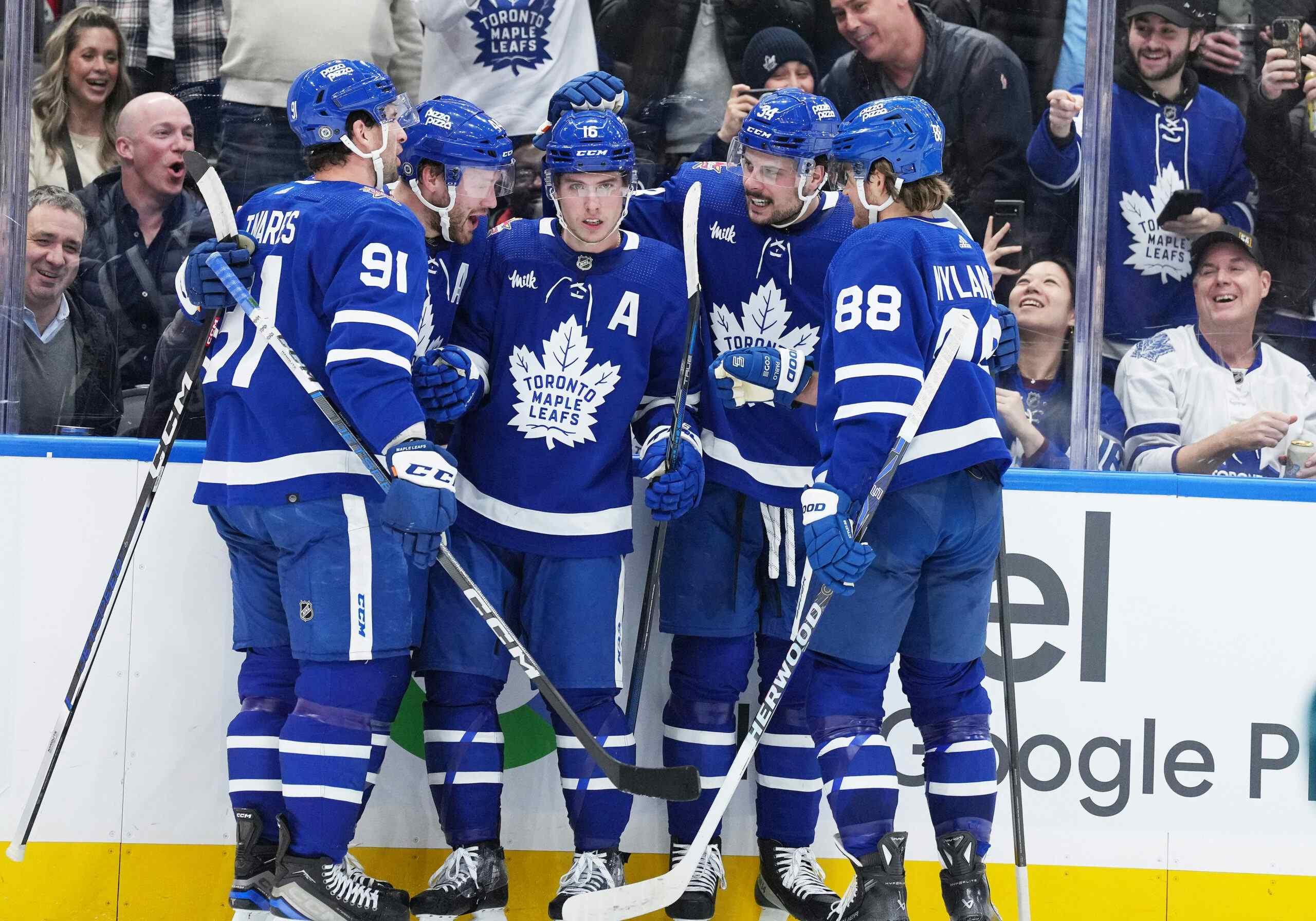The Leafs’ 2014 Draft, Second Rounders, and the New-Look Prospect Pool
It appears that Dave Morrison, the Toronto Maple Leafs’ Director of Amateur Scouting, has pleasantly surprised a good number of his critics.
With each of their six picks in the 2014 NHL draft, the Toronto Maple Leafs selected players known more for their point production potential as opposed to their size, grit, and defensive acumen.
While a few of the newest Leafs certainly possess size and strength, each one of them has a developing offensive game that the organization’s prospect pool certainly lacked. With all due respect to Connor Brown, Andreas Johnson, and Carter Verhaeghe, offensive skill was an area that the Leafs sorely needed to improve upon.
“Toronto is proud and happy to select…”
In drafting Swedish forward William Nylander, the Leafs have their first blue chip forward prospect since Nazem Kadri was selected in 2009. That is, if you ever considered Kadri a blue chip prospect.
“You can’t ignore the type of skill this young man has,” Morrison told reporters following the Day 2 of the draft when asked about Nylander. “There’s just so much upside… potential first line upside.”
Morrison, who is a rather calm, cool, and collected individual on camera, seemed legitimately excited to have just selected Nylander. The way he spoke suggested that the Leafs had been focused in on Nylander for a while, making their decision with the 8th pick an easy one.
It didn’t appear that way from the outside, as fans, bloggers, and the media alike spent the past few weeks debating the pros and cons of drafting Nylander, Nikolaj Ehlers, and Nick Ritchie, all of whom were available when the Leafs brass made their way to the stage. The fact that they went with Nylander in the end is, to be honest, a little surprising. Many thought that Ritchie’s blend of incredible size and solid offensive skill would be too much for the traditionally “safe” Leafs to pass up on.
Nylander, who many consider to be a bit of a steal with the 8th overall pick, immediately becomes the organization’s top prospect, and by a fair margin. Many have mused that his offensive upside could very well be the highest in the draft, which is pretty lofty praise considering the quality of top picks like Buffalo’s Sam Reinhart, Edmonton’s Leon Draisaitl, and Calgary’s Sam Bennett.
Though he was under contract with MODO in the SHL, Sweden’s top league, Nylander began the season with Rogle BK in the second tier Allsvenskan. As you probably have already heard, it’s here that young William got to play alongside his father, ex-NHLer Michael Nylander.
After scoring only a goal and seven assists in 18 games, Nylander was on the move again, this time being loaned out to Sodertalje (also of the Allsvenskan). Nylander was familiar with the organization, having played played his previous two seasons working his way through Sodertalje’s youth system. It’s here that Nylander started producing the way scouts thought he should, scoring 11 goals and 19 points in 17 games.
His improving play in Sweden’s second best league earned Nylander a promotion to finish off the season, being recalled from his loan by MODO and appearing in 22 games down the stretch. During that run, Nylander contributed with seven points, the drop in production acceptable considering he was now playing against the best competition Sweden had to offer.
On the international circuit is where Nylander really shined. While he didn’t play for Sweden’s U20 team at the World Juniors, Nylander absolutely dominated at the U18 tournament. With six goals and 16 points in only 7 games, Nylander was the tournament’s top scorer and named ‘Best Forward of the Tournament’
ESPN Insider Corey Pronman just may have been Nylander’s biggest fan, ranking him higher than most at #3 on his list of Top 100 NHL Prospects:
“Nylander’s pucks skills are elite, as he can be described as “an artist” by some scouts in terms of how well he controls the puck, and the unique plays he makes. Nylander’s hockey sense is fantastic as well, in terms of his vision, and offensive intellect. You combine that with a pretty good top gear and Nylander can create all sorts of havoc offensively.”
Where Nylander plays next season is a bit of a mystery. Leafs GM Dave Nonis has already said that Nylander will have every opportunity to earn his spot on the Leafs roster this coming fall. The skill and skating ability is certainly there, but one of the knocks on Nylander is his size. Yes, undersized wingers can succeed just fine in the NHL, but not many of them are 18 years old when they do.
If Nylander doesn’t stick with the Leafs, he will be eligible to play with the Marlies, as he’s not bound by the NHL-CHL agreement that prevents CHL players under the age of 20 from suiting up in the AHL. If the Leafs think it’s best Nylander continues to develop his skills back home, they are also able to loan him back to the SHL, most likely to MODO.
Missing Out in the Second Round; A Familiar Story
With no second round pick, having shipped it to Anaheim as part of the Peter Holland trade, the Leafs missed out on some quality talent. On Friday night, Nonis told reporters that they shouldn’t be surprised if the Leafs did find a way to move into the second round, but nothing became of it.
With the Leafs’ pick, the Ducks selected lanky Swedish defender Marcus Pettersson. Very raw, but obviously talented, Pettersson was one of the round’s more intriguing picks. Without a second round pick, the Leafs missed out on a number of solid prospects, most notably Ivan Barbashev (STL), Thatcher Demko (VAN), Ryan MacInnis (ARI), Eric Cornel (BUF), Roland McKeown (LAK), and Jack Doughtery (NSH).
This has become an issue for the Leafs, the lack of second round picks. It’s an issue that falls on the general manager and his assistants, and falls under the category of “poor asset management”. Since the 2004 NHL entry draft, ten years ago, the Leafs have only selected six players in the 30-to-60 range.
Nikolai Kulemin (2006) is the only one of the group to have had any sort of significant impact in the NHL, having scored 195 points in 421 career games, all with the Leafs. He’s likely on his way to free agency.
Jimmy Hayes (2008) was traded to the Chicago Blackhawks during the 2010 Draft so that the Leafs could select Brad Ross. Hayes is currently playing in the NHL for the Florida Panthers. Ross has spent the past two years splitting time between the AHL and ECHL, and has been largely underwhelming.
The 2009 Draft saw the Leafs select Jesse Blacker, who was traded to Anaheim in the aforementioned Holland deal and Kenny Ryan, who is a useful AHLer but not much more.
Lastly, and a little more positive this time, Matt Finn is about to make the jump to the professional ranks and is looking like a legitimate future top-four defender at the NHL level.
For those looking ahead, the Leafs currently do not have a 2nd rounder in 2015.
Skill, Project Picks, and the Latter Rounds
As previously mentioned, the Leafs organization’s biggest area of concern in the prospect pool was lack of offensive skill. Deep in two-way defenders and bottom-six forwards, drafting Nylander immediately and greatly improved the skill of the group. Through rounds three to seven, the Leafs looked to add further skill to the mix, though many of their picks are at least three to four years away from making an impact, if any.
In the third round, with the 68th overall selection, the Maple Leafs select Russian defenceman Rinat Valiev. Playing last season for the Kootenay Ice of the WHL, Valiev scored 5 goals and 28 points in 55 games from the backend. This was Valiev’s second time through the draft, having not been selected in 2013 after spending the past few years bouncing between the MHL and MHL-B, Russia’s junior leagues, and the USHL with the Indiana Ice.
That makes Valiev slightly more advanced due to his age, and eligible to play pro next year, but it’d be a bit of a surprise to see him with the Marlies next year. Despite his overage and import status in the CHL, it’s possible – maybe probable, that Valiev returns to Kootenay for another year.
At 6’1, 205lbs, Valiev certainly has size, but it’s his skating ability and intelligence that scouting reports tend to focus on. Ryan McGill, Valiev’s head coach in Kootenay, couldn’t say enough good things about him:
“He’s a big guy, he’s going to be a pretty imposing defenceman, but at the same time his skill level with the puck is tremendous,” McGill told reporters shortly after the pick. “The sky’s the limit for him. He can play any type of game. He can be your shutdown guy, he’s a good powerplay guy, he’s an all-around defenceman.”
The Leafs entered the draft with a couple fourth-round selections, the 94th and the 103rd, but traded the earlier of the two to St. Louis as part of the Carl Gunnarsson-Roman Polak deal.
The Blues used the 94th selection to select Ville Husso, a 6’3, 205lb goaltender from Finland. Husso was NHL Central Scouting’s top ranked European goaltender, and while he had a very rough outing at the 2014 World Juniors, he put up some very impressive numbers for HIFK of the Liiga, Finland’s top men’s league.
With the 103rd selection, the Leafs selected right winger J.J. Piccinich out of Youngstown of the USHL. Piccinich scored 27 goals and 58 points in 60 games played for the Phantoms this past season, his second year in the league. Piccinich is first and foremost a sniper, and was ranked 81st on Future Considerations’ list of top 2014 prospects:
“He projects as more of a goal scorer with his finisher’s touch, which includes a wicked wrist shot and the ability to get into high-scoring areas both with and without the puck… Piccinich owns impressive strength over the puck, and he has the ability to shield it from pressure and come off the walls with the puck. He works hard for his puck possession and comes in aggressively off the forecheck to pursue it. Piccinich is also an effective defensive player. He gets his stick in lanes and comes out hard on the point men. NHL Potential: Top-Six Scoring Winger”
Next season, Piccinich will be suiting up for the Boston University Terriers, and has a shot at lining up alongside 2015-eligible phenom Jack Eichel. Unless he makes major strides in his first year at BU, it’s going to be several years before Piccinich has any impact on an NHL or AHL roster.
In the 5th round, the Leafs dipped back into the USHL pool and selected centre Dakota Joshua of the Sioux Falls Stampede. With 17 goals and 38 points in 55 games played last season, Joshua’s stats certainly don’t jump out at you. That being said, this was the 6’2, 182lb pivot’s first year in the league, and was a youngster on a veteran team.
Joshua will return to the USHL for one more season, where he should play a much more significant role and increase his production, and is committed to play hockey for the Ohio State Buckeyes starting in 2015-2016.
In his post-draft press conference, Dave Morrison told reporters that the Leafs were “really excited,” to have brought Joshua into the fold. “He’s tall, he’s a very athletic kid, and we saw some flashes of some real good skill toward the end of the year…”
Chris Dilks over at SB Nation’s College Hockey Blog also likes what Joshua has to offer, and sees pro-level potential. “Joshua’s size makes him pretty versatile as a pro prospect,” Dilks writes. “He could play a lower line role at the pro level, with the offensive upside to be an offensive-minded power forward on a second line, and net-front presence on a power play.”
With their 6th round pick, the Leafs again looked to the U.S. Junior circuit, selecting left winger Nolan Vesey with the 158th overall pick. Vesey, the younger brother of Nashville 2012 third rounder Jimmy Vesey, spent the season developing with South Shore Kings of the USPHL. In 48 games, Vesey potted 28 goals and piled up 66 points, finishing second in league scoring.
Impressive numbers, even for what many would consider a second-tier junior league.Vesey was drafted by the Dubuque Fighting Saints of the USHL, but chose to play in South Shore for one season before making the jump to the University of Maine and the NCAA in 2014-2015.
More from Morrison on Vesey:
“He’s another guy with a lot of offensive potential, got a real nice set of hands. I think there’s a little bit of grit there, too. Nolan certainly has an edge to him, and it’s never a bad thing when a kid has a little bit of edge. But he’s got the hands and he can actually produce offensively.”
With their 7th round pick and final selection of the day, Toronto selected Pierre Engvall out of Frolunda’s J20 program. The 6’4, 190lb winger put up 17 goals and 35 points in 39 games for the Indians last year.
This is an intriguing pick for the Leafs, considering they’ve had great success drafting Swedes in the mid-to-late rounds in recent years. Petter Granberg (4th round, 2010), Tom Nilsson (4th round, 2011), and Viktor Loov (7th round, 2012) are all making steady progress towards NHL roster spots. Andreas Johnson (7th round, 2013), also drafted out of Frolunda’s J20 squad, was the SHL’s rookie of the year last season.
Future Considerations notes Engvall’s NHL potential as a ‘Top-Nine Two-Way Winger’ and ranked him as their 108th top draft-eligible prospect (one behind Rinat Valiev, coincidentally).
“At 6-foot-4, [Engvall] is a very good skater. He doesn’t have that superb vision you look for in a top-level playmaker, but he still gets the job done with good puck distribution, strong accuracy to his passes, and his excellent reach and size,” Future Considerations’ scouting report reads. “His development over the course of the season has been phenomenal. He’s using his strengths more to his advantage, and has started to play more physically.”
A New-Look Prospect Pool
Nylander now headlines a group of forwards that still excel primarily at two-way play. Behind him, Frederik Gauthier, Brown, Johnson, Verhaeghe, Leivo, Tyler Biggs, Carter Ashton and Jerry D’Amigo all have various degrees of NHL upside (in no particular order).
Valiev likely ranks somewhere in the middle of the Leafs’ relatively strong defensive depth, somewhere behind the likes of Finn, Stuart Percy, and perhaps Granberg.
The goaltending depth remains unchanged, which could develop into an issue if not remedied in the 2015 draft or via trade.
Garret Sparks and Chris Gibson are already developing in the AHL, and Antoine Bibeau is eligible to turn pro this coming year as well. It’s possible the organization enters next season without a single goaltending prospect at the junior level, which isn’t mandatory, but it’s certainly a good idea to have at least one goaltending prospect developing at each level.
All in all, the 2014 NHL Entry Draft injected a good deal of skill into the Leafs’ prospect pool, maybe even pulling it out of the bottom of most critics’ organizational rankings.
Recent articles from Justin Fisher





